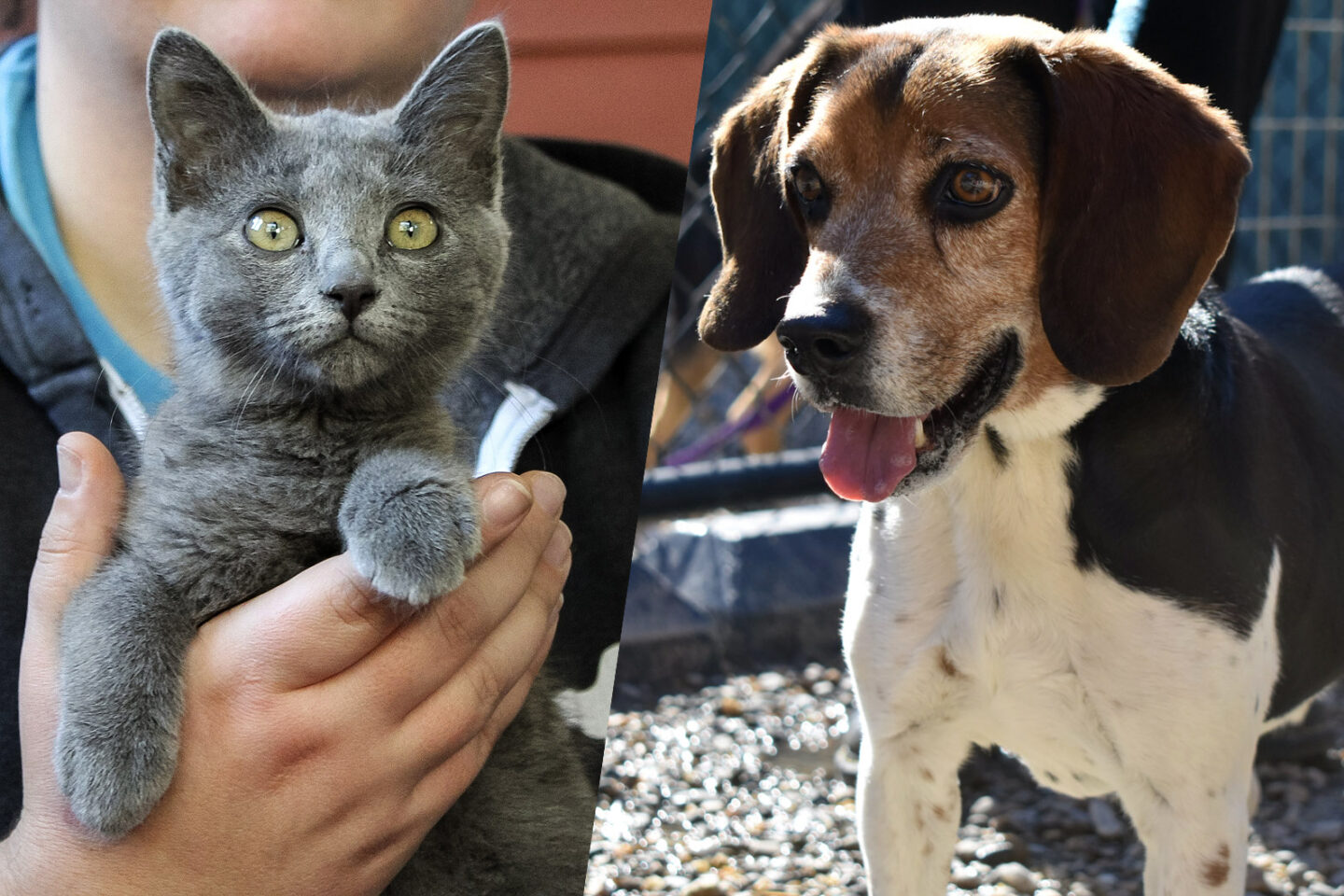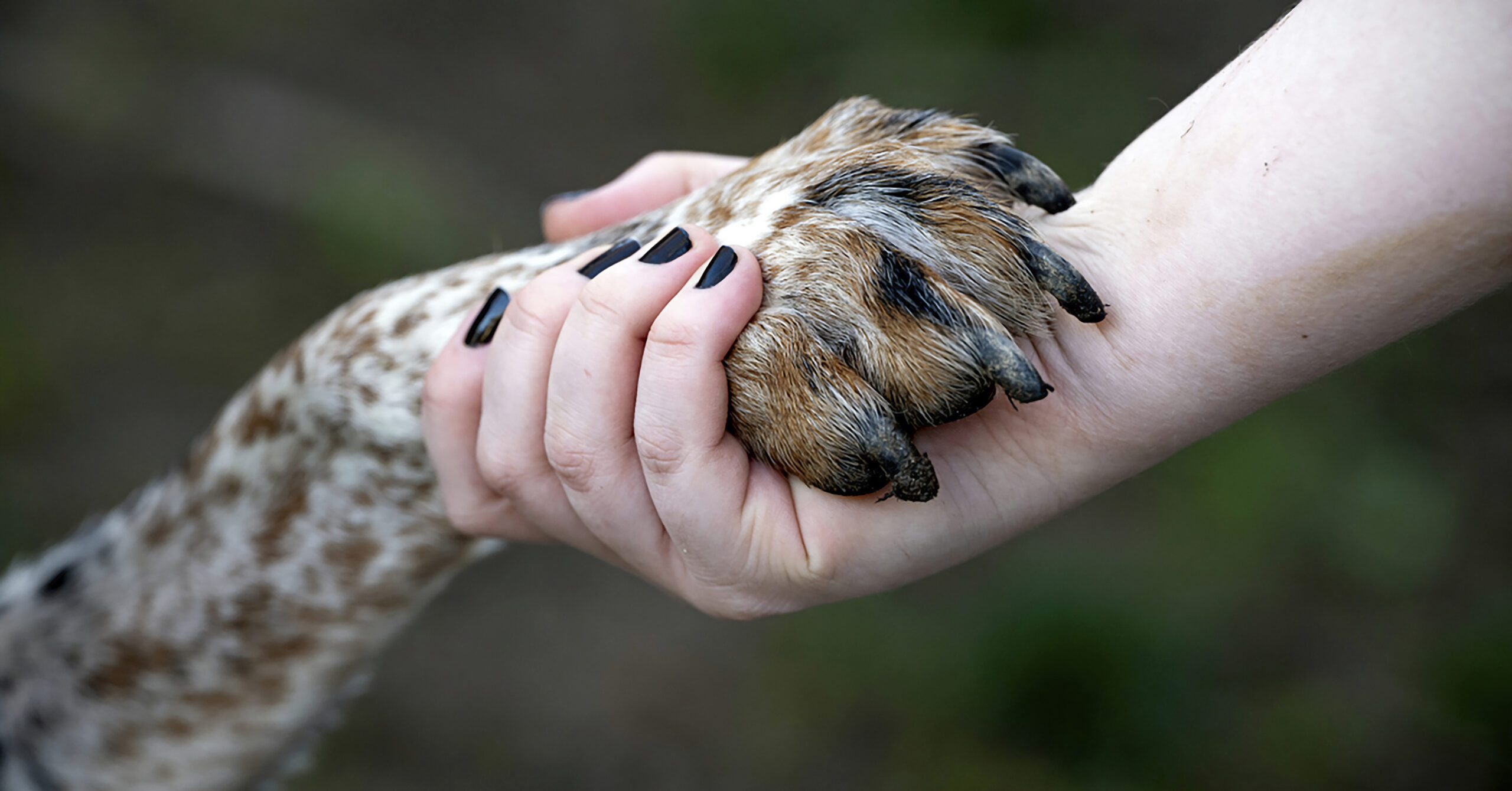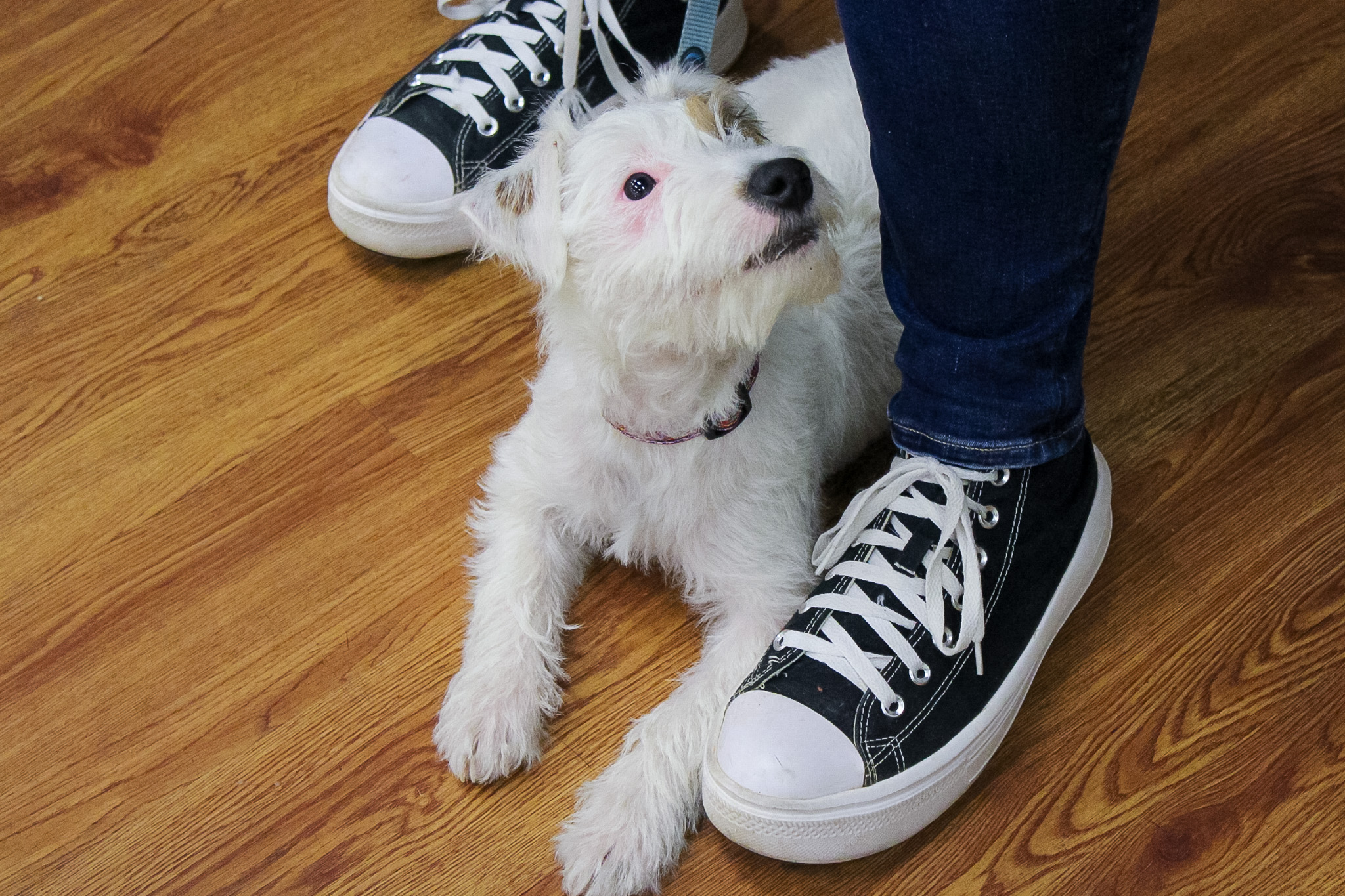by Pia Silvani, CPDT-KA, Director of Behavior and Training
Despite what you may have heard, many dogs and cats can live together without concern. However, not ALL dogs and cats are meant to live with each other. This has a lot to do with each pet’s personality, experience, age and more.
Set your house up for success
Your cat should have a cat-proofed “safe room” where the dog cannot have access. A safe room must have a secure door so the dog cannot easily enter. Put your cat’s litter box, cat trees, scratching posts, hiding places (e.g., tunnels), toys, food and water in the room.
Set your home up with raised cat trees or shelves so your cat can easily escape if need be. Your cat should be allowed to wander when your dog is contained in another room (e.g., at night when your dog is in a crate or in your bedroom).
Swap bedding, towels or blankets between the animals to allow them to gradually get used to each other’s scents.
Feeding time
With the door closed, feed them on opposite sides of the door so you are matching the presence of each pet with pleasant experiences. As they get more relaxed, you can move the bowls closer until they are both calm while eating.
Once both animals can eat their food right next to the door, you are ready to attempt a calm greeting in a common area of the house where both animals have had access to (e.g., living room).
Introductions – don’t rush!
Start off by keeping them separated for several days, then gradually introduce them to each other. Sessions should be controlled and short. Introductions can take weeks and sometimes months. Rushing the introduction is not recommended.
Your dog should have a leash attached to a piece of equipment that she cannot back out of (e.g., well fitted martingale collar). Your cat should have easy access to her “safe” room. Keep the first few sessions brief, ending before either of the pets show signs of fear, anxiety or stress.
These first sessions should be positive. Familiarize yourself with signs of stress in both species (e.g., hissing, growling, flattened ears, raised hackles, aggression). If you see any of these signs in either pet, toss a toy to your cat and calmly lure the dog from the room. Give them more time behind a closed door
Reward your dog for calm behavior when your cat is present. If your dog cannot remain calm, you may need to bring him to a training class to teach impulse control behaviors such as a down stay. Asheville Humane Society offers training classes for dogs of all ages.
Repeat exercise on a daily basis
Repeat these introductions on a daily basis. If your cat enjoys treats, save her favorite treat for the session. You can also hand feed your dog his meal so both pets associate one another with something positive.
If your cat leaves the room at any time, allow her to do so while being careful to keep your dog from lunging forward to chase. Having a second person can be very helpful.
Allow them to be loose together
When both animals appear to be calm and doing well, allow them loose in the room, keeping your dog on a leash that is dragging so you can quickly step on it if need be. If there is any sign of tension, calmly remove the dog, making sure your cat always has access to her “safe” room.
Continue to keep your pets separated when you cannot supervise them.
Need more help?
If you have additional questions, visit the Behavior Resource Library.
Pia Silvani
See more from our Behavior Blog
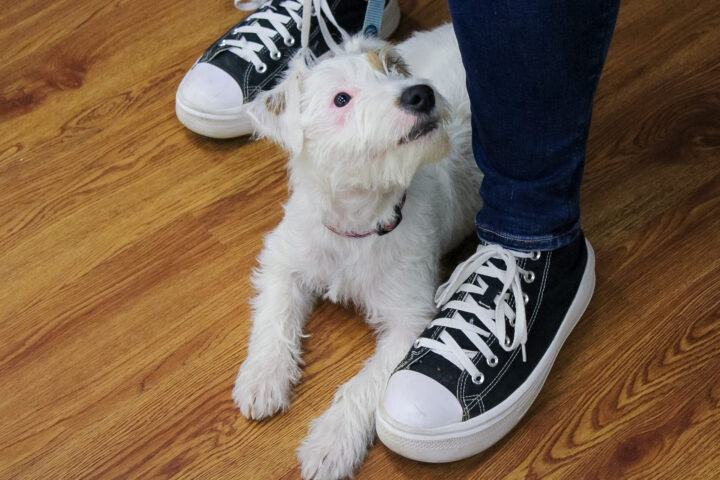
Rewards: In the Eye of the Beholder
Who doesn’t love spoiling their pets? Rewards—whether treats, praise, or play—motivate dogs (and cats!) to repeat behaviors they know please you. The more you reward what you love, the quicker they’ll learn and the happier everyone becomes. Read on for some tips to encourage the right behaviors.
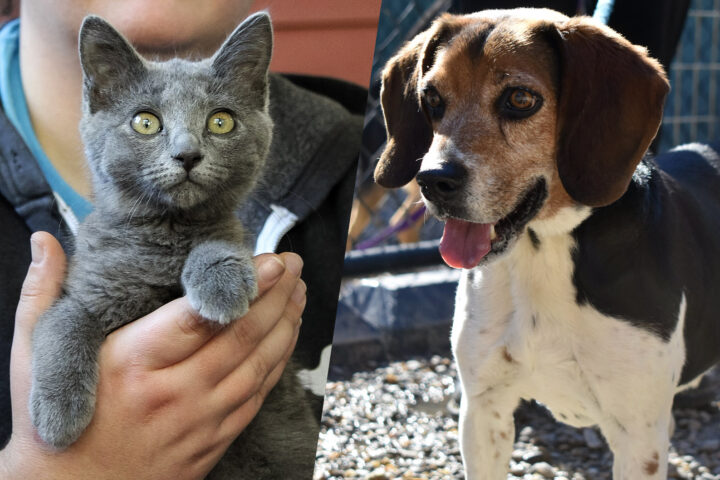
Introducing Dogs and Cats to Each Other
Despite what you may have heard, many dogs and cats can live together without concern. However, not ALL dogs and cats are meant to live with each other. This has a lot to do with each pet’s personality, experience, age and more.
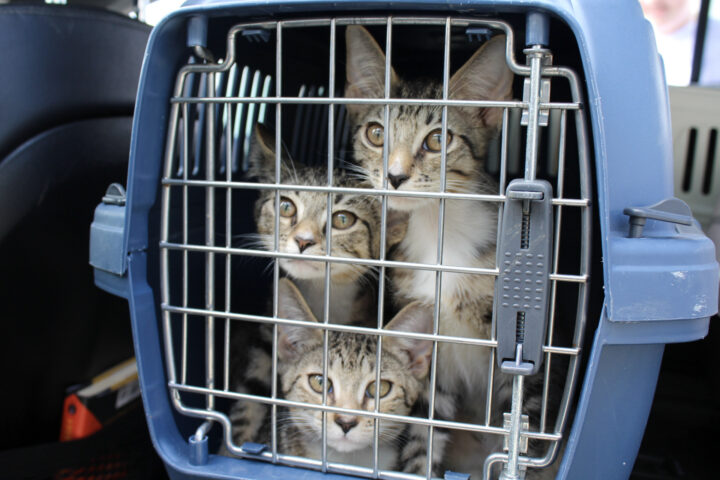
Are You Ready When Disaster Strikes?
When Hurricane Helene struck Asheville, many pet owners were unprepared for sudden evacuations. Without crate training or travel experience, pets faced added stress in shelters and hotels. Here are some essential tips to help your pet stay calm and safe during emergencies—because disaster can strike anytime. Be ready before it happens!
